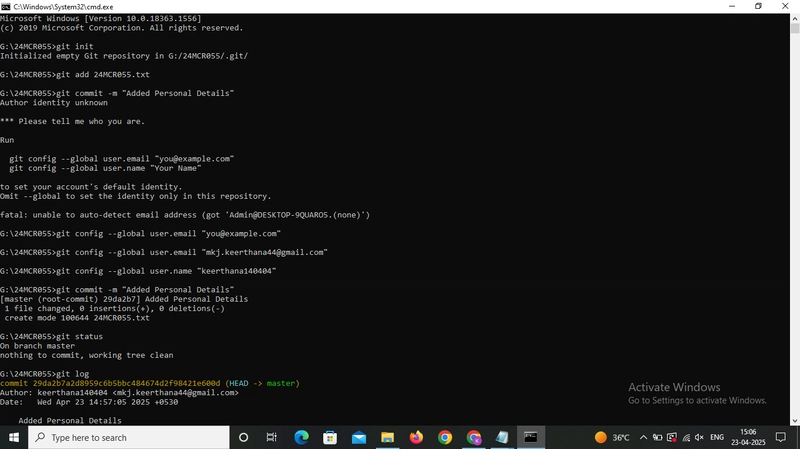GIT/GITHUB COMMANDS

Git is a powerful version control system that helps you track changes and collaborate on code.
This post breaks down 11 must-know Git and GitHub commands in a beginner-friendly way.
1. git ini...
# 🚀 Step-by-Step Git Commands for Beginners (with Visuals)

If you're just getting started with Git and GitHub, here's a simple, clear guide to walk you through setting up your repository and pushing your changes for the first time!
🛠️ Initialize ...
Git/Git Hub commands

Git Basic Command:
git init: initialize an existing directory as a Git repository
git add: add a file as it looks now to your next commit (stage)
git commit: Adding commits keep track of ...
My First Git Experience: What I Learned as an ML Workshop Beginner

Hey everyone! 👋
I'm Indujha, and I'm currently learning Machine Learning in a workshop. As part of our tasks, we were introduced to Git—a version control system that's super helpful when working ...
GIT COMMANDS

1. Initialize the Git Repository
To begin tracking a project with Git, open the terminal in the project directory and run:git init2. Add Files to the Staging Area
To track all current changes in the p...
Git Commands Explained with Quick Analogies
If Git feels like magic sometimes, here’s a cheat sheet that breaks it down with simple analogies. Think of Git as your time-traveling journal for code. Here's how the commands work, in human terms...
USEFUL GIT COMMANDS

✅1. git diffDescription:
Shows the differences between files in your working directory and the index (staging area).Command:
git diffScreenshot:
✅2. git logDescription:
Displays the commit history...
Git Essentials: Commands You'll Actually Use Every Day
Ever find yourself lost in Git documentation? This straightforward guide explains the essential Git commands you'll actually use daily... Instead of scrolling through man‑pages, bookmark this post: ...
